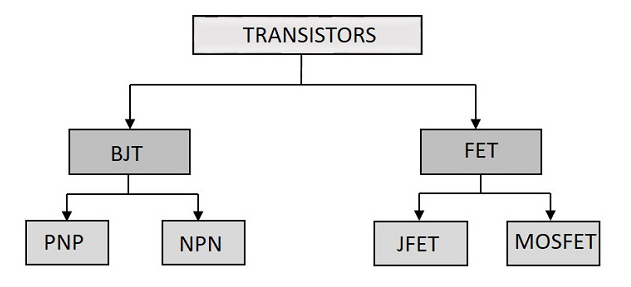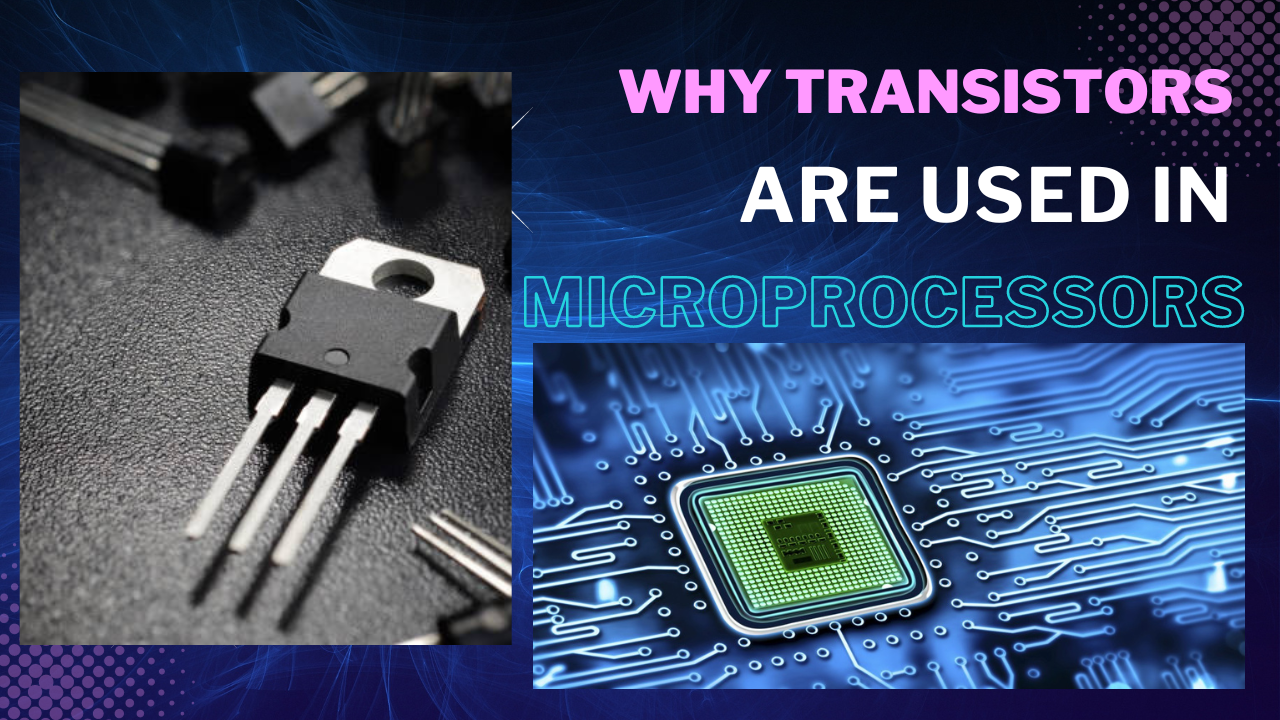Introduction
Every microprocessor and microcontroller’s heart and brain are transistors. Millions of transistors make up a single microprocessor, but what is the significance of this tiny device in microprocessors? Why transistors are used in microprocessors?
In this blog post, we’ll cover transistor working, applications, and why transistors are used in microprocessors. So let’s dive into the transistor, a key component of a microprocessor, in more detail.
Table of Contents
What is transistor and how does it work.
According to the doping material used, semiconductors can be divided into two categories: p-type and n-type. When we join both, we obtain a diode, but when we connect two diodes back to back, we get a transistor.
Bipolar junction Transistors can be n-p-n or p-n-p. Now let’s discuss how a n-p-n transistor works.
1. In a transistor, each layer has a unique name. They are referred to as emitter, base, and collector.
2. The emitter is heavily doped having free electrons, the base is lightly doped having vacant space for electrons (holes), and the collector is moderately doped having free electrons.
3. All three layers are connected, as shown in the figure. When there is no external voltage, only a few charges accumulate on both junctions, creating a barrier voltage.

4. Now, when we connect an external voltage across the collector and emitter in any manner, one diode will be forward biased and one will be reverse biased, putting the transistor in an off state.
5. But when we simply connect a small source of voltage (greater than the barrier voltage) across the base to the emitter by connecting the base to the positive terminal, making it forward bias, a large number of electrons start moving from the emitter to the base, but if the base is lightly doped, a few electrons will combine with the holes, jump across the neighbouring holes, and flow to the base.
6. But a lot more electrons have crossed to the p-side. What will these remaining electrons do?

7. The remaining electrons will be attracted by the positive terminal connected on the collector side, making current flow from the collector to the emitter circuit. So a small base current is amplified to a high collector current, putting a transistor in a on state up until the base voltage is applied.
ALSO READ: Why do Diodes have a Threshold Voltage.
Why transistors are used in microprocessors?
As technology advanced, our devices became smaller and smaller. When computers were first invented, their structure was quite large and big, taking up the entire room. But Microprocessors and microcontrollers, and ultimately transistors, made it possible for electronics to be small.
Transistor jobs are numerous in microprocessors. Let’s talk about the various functions that transistors perform in microprocessors and why transistors are used in microprocessor.
Logic gates
In electronic circuits, mathematical operations are performed by logic gates. Practically, we can realise logic gates using diodes or transistors, but transistors are preferred because they are current-controlled devices and their operation can be controlled by tuning the input. So all logic gates are made up of transistors only.
Memory or Registers
A register is a collection of flip-flops. To store binary data in electronic circuits, flip-flops are used. One flip-flop can store single-bit digital data. For storing large numbers of bits, groupings of flip-flops are used. Flip-flops are basically made up of transistors.
Operational Amplifiers
Microcontrollers and microprocessors have operational amplifiers. An operational amplifier is an integrated circuit (IC) that amplifies the difference in voltage between two inputs. Operational amplifiers are generally made up of a cascading transistor setup.
Switch
With no moving parts, a transistor functions like a switch. By adjusting the current in another area of the transistor, we may control or turn on and off the current in one area. High-speed binary computations are carried out by switching millions to billions of transistors on and off.
Interconnection
On a chip, transistors can be used to drive signals over greater distances while maintaining a strong signal.
Power Efficiency and Compactness
When used for switching, transistors are built to utilise extremely minimal power. Also, due to their size in modern electronics, transistors also make circuits incredibly compact.
Types of transistors
Transistors are basically of two types: BJT (bipolar junction transistor) and FET (field effect transistor). Further, they are divided into more categories, as shown below. Each transistor is specialised in its application and purpose.

11 Uses of Transistors
- As a Switch
- As a Phototransistor
- As an amplifier
- As a BJT (bipolar junction transistor),
- As a FET (field effect transistor),
- As a HBT (heterojunction bipolar transistors),
- As a Darlington Transistors
- As a Schottky Transistors
- As a Multiple Emitter Transistors
- As a dual-gate MOSFET
- As an Avalanche Transistors
Conclusion
A microprocessor is made up of millions or billions of transistors, just like our brain is made up of millions or billions of cells or neurons.
While using vacuum tubes in the past, we could never have predicted that our electronic circuits would become incredibly small and powerful just because of transistors.
So let’s see how these microprocessors and microcontrollers, with the help of the unsung hero transistor, will transform and enhance our lives.
FAQs
How many transistors are used in microcontroller?
Nowadays count is measured in billions, depending on the processor.
What is the use of transistor in microcontroller?
In microcontrollers, transistors can function as switches, logic gates, flip-flops, and more.
Why are transistors better than switches?
Transistor can turn on and off a million times in a second and has no moving parts.
Which transistor is more useful?
It depends on the application and the circuit it will be utilized in.

